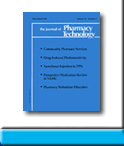 |
 |
THE ROLE OF LEUKOTRIENE
MODIFIERS IN THE MANAGEMENT OF EXERCISE-INDUCED BRONCHOCONSTRICTION
Charles B Kelly and Philip T Rodgers
To request full article click here.
OBJECTIVE: To review the use of leukotriene modifiers in exercise-induced bronchoconstriction (EIB).
DATA SOURCE: A MEDLINE search (1966–March 2001) identified pertinent English-language publications on EIB in humans.
STUDY SELECTION: Selection of prospective clinical studies was limited to those that focused on prevention of EIB with leukotriene modifiers, including both leukotriene receptor antagonists and 5-lipoxygenase inhibitors.
DATA SYNTHESIS: Leukotriene modifiers have been shown to attenuate EIB in patients with mild to intermittent, stable asthma from exacerbations after exercise, especially those with a predicted forced expiratory volume in 1 second (FEV1) >80% and who did not require corticosteroids. Extrapolation to patients with more severe forms of asthma cannot be made because of the lack of currently available data in these types of patients. Children may benefit from the oral dosage forms of leukotriene modifiers if they have difficulty using a metered-dose inhaler. The current literature supports a lack of a tolerance effect with leukotriene modifiers, as opposed to tachyphylaxis seen with beta2-adrenergic drugs after repeated dosing. As many as 25% of EIB patients will not respond to therapy with leukotriene modifiers. Montelukast has the greatest volume of data and the most positive benefits of the available leukotriene modifiers.
CONCLUSIONS: Evidence supports the use of leukotriene modifiers for protection of EIB in patients with stable, mild to intermittent asthma with a predicted FEV1 80% if beta-agonists are intolerable or ineffective. Potential benefits include the lack of a tolerance effect, the long duration of action exhibited by some leukotriene modifiers, and the availability of a tablet form. Beta2-adrenergic drugs should remain the first-line therapy for EIB; however, leukotriene modifiers may provide a valuable alternative in those few who cannot use short-acting beta-agonists. Long-term safety studies of leukotriene modifiers in children and the elderly with EIB are necessary before widespread use can be advocated in the pediatric and geriatric populations.
J Pharm Technol 2002;18:115-24.
ACPE Universal Program Number: 407-000-02-052-H01
To order the complete CE article click here.
To request full article click here.
|
|
|
||
|

